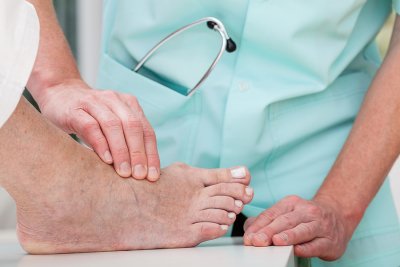What to Expect From Bunion Removal Surgery
A bunion is a painful growth made up of bone and soft tissue that develops between your first and second toe. Bunions can make it very difficult to stand and walk comfortably. Bunion surgery performed by a respected podiatrist in Sugar Land has a high success rate in relieving you of bunions.

Prior to Surgery
Your podiatrist may recommend bunion removal surgery if you have particularly severe bunions, or if other non-invasive treatment methods failed to bring you relief. Prior to your bunion removal surgery, your podiatrist will perform medical tests to ensure that you’re a good candidate for the procedure. He will X-ray your lungs, check the condition of your heart, and screen you for illnesses. You may need to fast or discontinue use of certain medications in preparation for the surgery.
Bunion Removal Procedure
Bunion removal surgery is an outpatient procedure that is performed under general anesthesia or a local anesthetic. Your surgeon will remove your bunion and will also repair the area between your toes to make walking more comfortable for you and prevent further deformity. The most common types of bunion removal surgery include osteotomy, exostectomy, and arthrodesis. In an osteotomy procedure, your surgeon will cut and realign the joint of your big toe. Exostectomy allows the surgeon to remove the bunion from the toe joint without realigning it. With arthrodesis, the surgeon will replace your damaged toe joint and correct the deformity with metal screws or plates.
Recovery Process
After the surgery, your foot will be bandaged and you will be taken to a recovery room, where you’ll remain for around three hours until the anesthesia wears off. You will not be fully recovered from the surgery for about five months. For the first two weeks post-surgery, your podiatrist may recommend that you wear a surgical boot or cast. When the cast is removed, you may have to wear a foot brace, using a walker or crutches to move around. You may be able to drive after two or three weeks, but should try to avoid walking.

